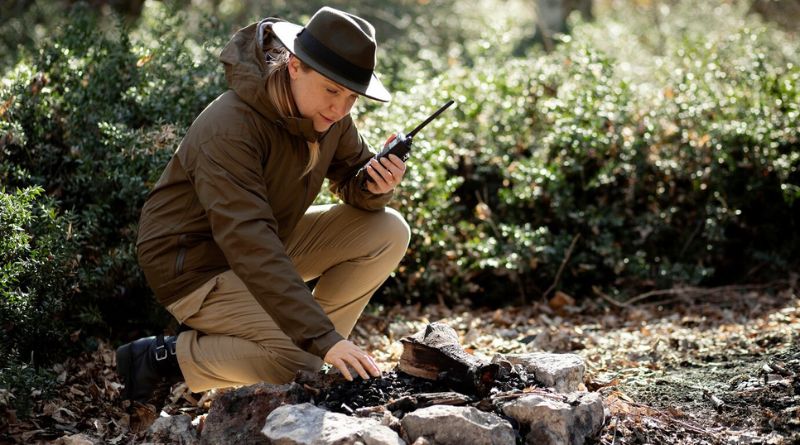Astonishing Metal Detector Discoveries – Metal detectors, once relegated to security and prospecting, have emerged as invaluable tools for uncovering hidden historical treasures. This outline delves into the realm of astonishing metal detector discoveries, exploring their profound impact on history, archaeology, and the collective imagination.
From unearthing ancient artifacts to contemporary tales of treasure hunting triumphs, these devices have reshaped our understanding of the past. As technology advances, metal detectors continue to evolve, raising new questions about ethics, legality, and the future of discovery.
This exploration navigates through historical finds, archaeological breakthroughs, and the captivating stories that underscore the allure of metal detecting. Join us on a journey through time, where the beep of a metal detector can lead to remarkable revelations and uncover the mysteries buried beneath our feet.
Astonishing Metal Detector Discoveries
The Staffordshire Hoard (2009)

Discovered in 2009, the Staffordshire Hoard stands as the largest cache of Anglo-Saxon gold and silver artifacts ever found. Unearthed by a metal detectorist in the United Kingdom, this remarkable hoard comprises over 3,500 intricately crafted items, including sword hilt fittings and helmet fragments, dating back to the 7th century.
The find provides unprecedented insights into the martial culture and craftsmanship of the Anglo-Saxons, shedding light on a pivotal period in England’s history. The significance of the Staffordshire Hoard extends beyond its material value, contributing substantially to our understanding of medieval art, warfare, and societal structures.
Also, Read – Most Mass-Produced US Naval Ships in WWII
The Crosby Garrett Helmet (2010)
Discovered in 2010 in Cumbria, England, the Crosby Garrett Helmet is a stunning Roman cavalry helmet, an exceptional find in Roman archaeology. Known for its unique face mask featuring expressive eyes and a grinning mouth, believed to depict a deity or hero, the helmet is a masterpiece of Roman craftsmanship.
Dating back to the late Roman Empire, this archaeological gem provides valuable insights into the artistic and martial traditions of the time. The Crosby Garrett Helmet stands as a rare and extraordinary example of Roman military equipment, captivating historians and art enthusiasts alike with its exceptional design and historical significance.
The Hoxne Hoard (1992)
Unearthed in 1992 in Suffolk, England, the Hoxne Hoard is a monumental discovery, representing one of the largest Roman hoards found in Britain. Comprising an astonishing collection of silver and gold coins, jewelry, and tableware, the hoard dates back to the 4th and 5th centuries.
Believed to have been buried during times of unrest, this treasure trove offers a vivid snapshot of Roman-era wealth and craftsmanship.
The Hoxne Hoard’s significance lies not only in its material value but in its ability to provide historians with valuable insights into the economic, social, and political landscapes of Roman Britain during this pivotal period in history.
The Rosetta Hoard (2015)

Discovered in 2015 in Israel, the Rosetta Hoard is a captivating find comprising gold coins from the Abbasid Caliphate. This treasure, dating back to the Islamic Golden Age, includes over 400 meticulously crafted gold coins.
The hoard not only showcases the advanced metallurgical skills of the time but also offers a glimpse into the economic and political dynamics of the Abbasid era.
Unearthed in the ancient city of Caesarea, the Rosetta Hoard contributes significantly to our understanding of the region’s history during a period marked by flourishing cultural, scientific, and economic advancements within the Islamic world.
The Cape Cod Treasure Chest (2012)
Discovered in 2012 in Massachusetts, USA, the Cape Cod Treasure Chest is a modern-day treasure trove with a historical twist. A couple stumbled upon a cache of gold coins dating from 1857 to 1914 buried in their backyard.
This hidden fortune, estimated to be worth millions, captured imaginations and fueled dreams of hidden treasures. The coins, minted during the 19th and early 20th centuries, not only hold significant monetary value but also serve as tangible links to a bygone era.
The Cape Cod Treasure Chest embodies the allure of unexpected discoveries and adds a touch of mystery and excitement to the world of metal detecting.
The Vale of York Hoard (2007)
Unearthed in 2007 in England, the Vale of York Hoard is a compelling Viking-age discovery. Comprising over 600 silver coins and various artifacts, this hoard sheds light on the extensive trade networks and cultural interactions during the Viking Age.
The coins, predominantly Anglo-Saxon and Viking, reveal the complexities of economic relationships in the 9th and 10th centuries.
Buried at a time of political upheaval, the Vale of York Hoard contributes significantly to our understanding of Viking activities in England, offering a glimpse into the economic and social dynamics of the region during this tumultuous period in history.
Also, Read – Iconic Aircraft That Have Stood the Test of Time
The Saddle Ridge Hoard (2013)
Discovered in 2013 in California, USA, the Saddle Ridge Hoard is a modern-day treasure find that captured international attention. A couple walking their dog stumbled upon a cache of 1,427 gold coins buried in cans on their property.
The coins, dating from 1847 to 1894, were valued at over $10 million. This extraordinary discovery sparked fascination and speculation about the origin of the treasure. The Saddle Ridge Hoard represents a unique blend of history, intrigue, and the thrill of unexpected fortune, leaving a lasting legacy in the world of metal detecting and treasure hunting.
The Shapwick Hoard (1998)

Discovered in 1998 in Somerset, England, the Shapwick Hoard stands as a remarkable Bronze Age find, offering a glimpse into the craftsmanship of a bygone era. Comprising 9,262 pieces of metalwork, including jewelry and tools, the hoard dates back to around 1900-1700 BCE.
This extensive collection provides valuable insights into the technological and artistic advancements of the Bronze Age inhabitants in Britain.
Unearthed by metal detectorists, the Shapwick Hoard contributes significantly to our understanding of prehistoric communities, showcasing their skill in metallurgy and shedding light on the tools and adornments that played a crucial role in their daily lives.
Conclusion
In conclusion, the world of metal detecting remains a captivating frontier, bridging past and present. From unearthing ancient relics to navigating ethical considerations, enthusiasts and researchers alike contribute to a tapestry of discovery.
As technology propels us into the future, the allure persists. Metal detectors not only reveal hidden treasures but also challenge us to balance the excitement of finding with the responsibility of preserving history.
In their persistent beep, we find a reminder that the journey through time continues, with metal detectors acting as guides, uncovering stories that connect us to our shared human heritage.
FAQs
Metal detectors work by emitting electromagnetic fields and detecting changes in these fields when they encounter metal objects. This technology aids in identifying and locating items buried beneath the ground.
Notable historical discoveries include ancient coins, jewelry, weapons, and other artifacts. These findings contribute to our understanding of past civilizations and cultures.
Metal detectors have played a significant role in archaeology by assisting in the discovery of artifacts and sites. They provide a non-invasive means of locating items without extensive excavation.







